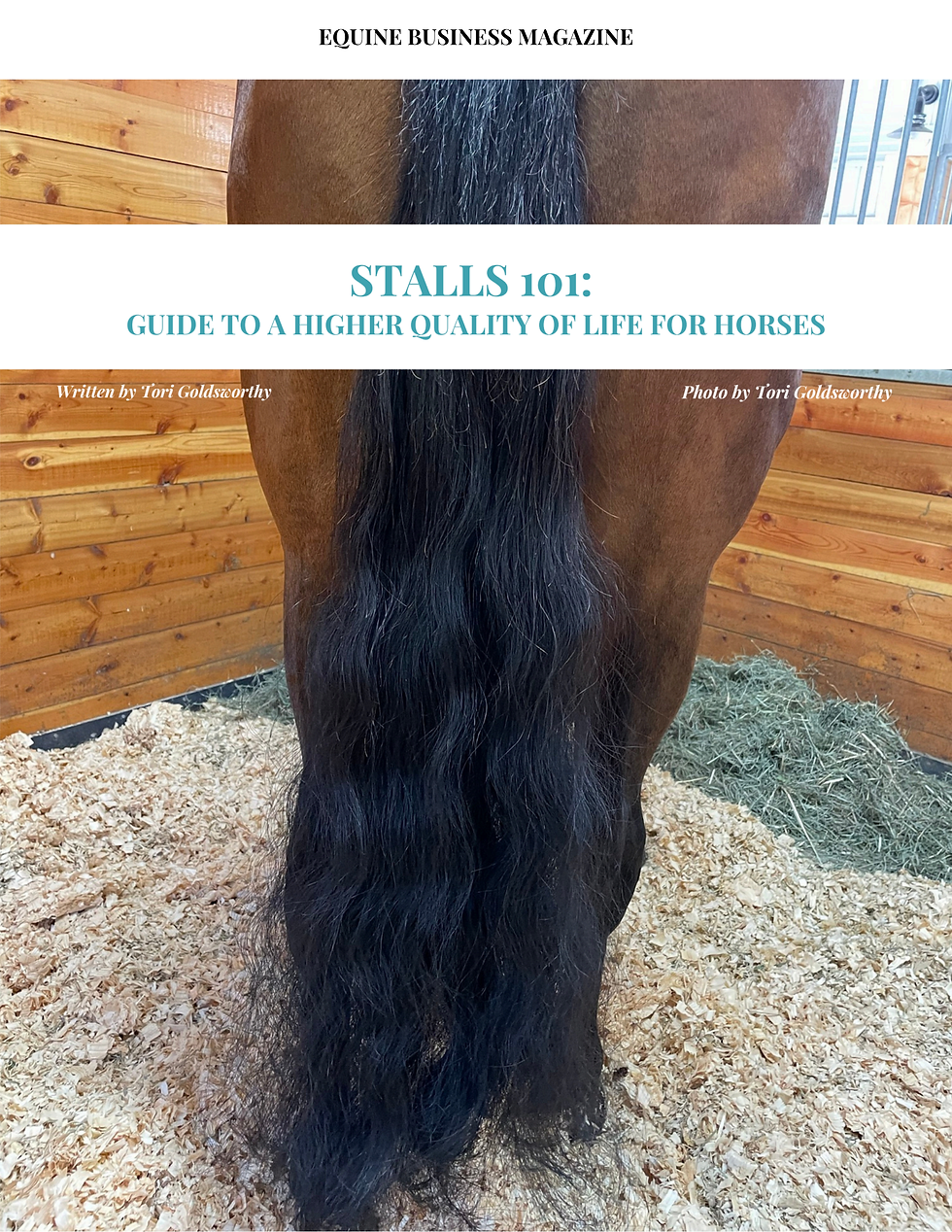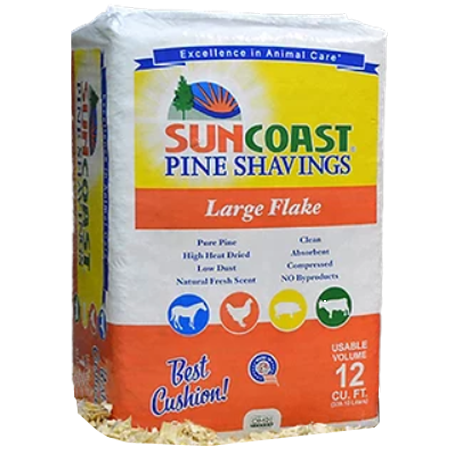Stalls 101: Guide To A Higher Quality Of Life For Horses
- Tori Goldsworthy

- Aug 16
- 4 min read
Updated: Aug 17

When it comes to horse care, the devil is in the details — and few details are more important than stall design and management. As someone who worked in a new construction facility for retired show horses, I know firsthand the difference a well-designed, well-kept stall makes for both horse health and overall barn atmosphere. Comfort and pristine conditions were always a top priority, and I want to share what I learned.
Building The Perfect Stall: Foundations Matter
A proper stall starts with its base. One of the biggest mistakes I see is using a concrete base. Concrete is far too hard on a horse’s joints and hooves, leading to discomfort and potential long-term damage. Instead, a layered system works best:
Base Layer: Compacted stone dust or gravel and a top layer of level dirt provides drainage.
Matting: High-quality stall mats offer cushioning and reduce bedding loss. Opt for interlocking mats or installed stall mat systems to prevent shifting.
Bedding: The final layer is bedding, which offers comfort, and absorbs moisture.
Bedding Basics: Deep Bedding is Key
Too often, I see stalls with barely enough bedding to cover the mats. Not only does this create discomfort, but it can also lead to slippery surfaces and ammonia buildup. Deep bedding allows horses to “potty train” in one area, where urine can be absorbed without spreading. This targeted absorption makes cleaning easier and reduces the need to strip the entire stall daily.
Popular bedding options include:
Shavings: Soft, absorbent, and widely available. (My favorite option, though it is pretty traditional, not all shavings are created equally. Check out my shaving recommendations at the end of the blog).
Pelleted Bedding: Expands when wet and is easy to pick. Can harbor lots of bacteria due to high moisture content.
Straw: Traditional, but less absorbent and can be harder to clean. Very low dust, used in many thoroughbred barns for this reason.
Managing Ammonia and Odors
Ammonia buildup isn’t just unpleasant — it poses serious health risks for horses and humans alike. Proper ventilation is crucial, but so is daily stall maintenance.
To combat ammonia:
Pick Stalls Daily: Remove soiled bedding and manure. (I have worked in facilities that constantly pick stalls in shifts all throughout the day in between turn out, brining horses in, and even a night check stall cleaning).
Deep Clean Weekly: Strip the stall, scrub mats, and allow them to dry. HOWEVER if you properly clean stalls you should rarely have to strip stalls especially if you keep horses relatively clean as well and stick to a very strict schedule.
Use Stall Refreshers: Products like Sweet PDZ or lime can neutralize odors.
Keeping Clean: The Importance of Dusting and Disinfecting
A dusty barn is more than an eyesore; it can affect respiratory health. Regular dusting of stall walls, ledges, and lighting fixtures reduces airborne particles. Don’t forget to wipe down surfaces and disinfect regularly, especially during flu season. PLEASE wipe down stall walls, this is something that is so ignored in many facilities and once manure becomes caked on it is so difficult to remove.
Choosing the Right Stall System
Investing in a quality stall system pays off in the long run.
Look for:
Solid Partitions: Prevent fighting between neighbors.
Grilled Fronts and Dividers: Allow airflow and social interaction.
Sliding Doors: Save space and reduce the risk of injury.
Aisleways: Safety Starts Outside the Stall
The right flooring outside the stall is just as important as what’s inside:
Rubber Pavers: Offer traction and reduce fatigue.
Brushed Concrete: Provides grip without being abrasive.
Dirt Floors: Natural but require regular maintenance. Avoid smooth concrete and heavy gravel, both of which increase the risk of slipping.
Links to Recommended Products and Installers:
Stall Mats: Check out Stable comfort stall kits such as the Soft Stall system, or even the ThuroBed mattress systems.
Bedding Options: Sun Coast bedding offers large flake highly absorbent and low dust shavings for horses.
Odor Control: Sweet PDZ is my go-to for ammonia management.
Stall Installation: For Wisconsin-based stall construction, I recommend Equine Facility Design or Midwest Stalls.
A clean, well-bedded stall isn’t just about appearances; it’s about giving your horse the comfort and care they deserve. From proper flooring to deep bedding and daily maintenance, every detail matters and the horses notice. Ready to take your horse care game to the next level? I’m always here to help with insights and advice. Let’s make your barn the gold standard.


Tori Goldsworthy
Equestrian Property Specialist | Photographer | Blogger
Tori Goldsworthy has dedicated her life to serving the equestrian community. Based in Central Wisconsin, she is the state’s first Certified Equestrian Property Specialist, combining her educational background in Equine Science and Business Management with years of hands-on experience in the horse industry. Her passion extends beyond real estate—Tori is also the owner of Goldsworthy Equine Photography, where she captures the bond between horses and their humans. She runs a free educational blog, helping farm owners navigate the challenges of horse property ownership.
With a deep understanding of equestrian needs, Tori brings expertise, compassion, and a lifelong love of horses to everything she does.
This article is from the August issue of Equine Business Magazine







Comments